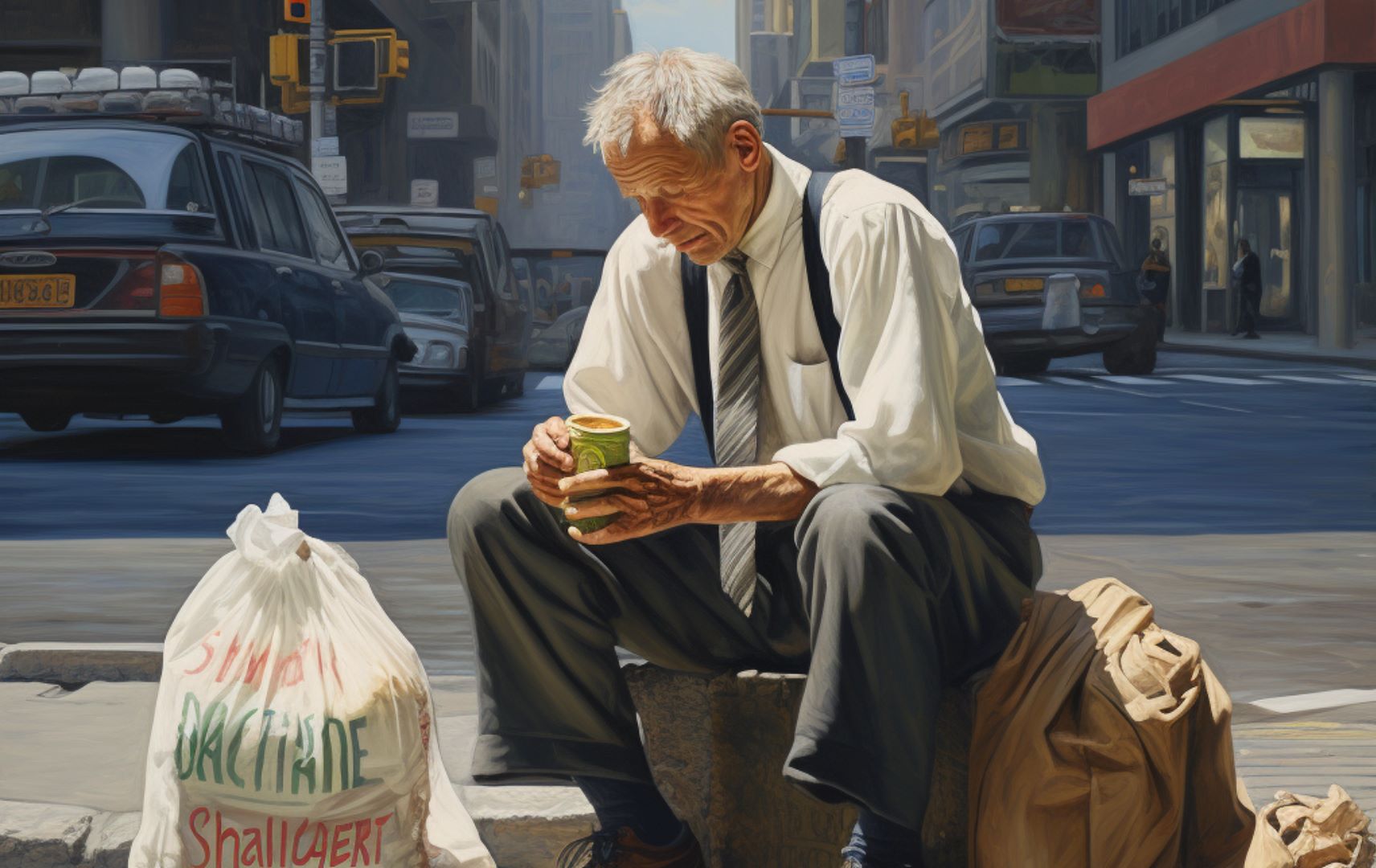

Finance
How Do Pension Funds Invest?
Published: January 23, 2024
Learn how pension funds invest their assets and generate returns. Explore the various investment strategies and financial instruments used in pension fund management. Discover the key principles of finance applied in pension fund investing.
(Many of the links in this article redirect to a specific reviewed product. Your purchase of these products through affiliate links helps to generate commission for LiveWell, at no extra cost. Learn more)
Table of Contents
Introduction
Pension funds play a crucial role in ensuring financial security for individuals during their retirement years. These funds are designed to provide a steady income stream for retirees, typically through investments made during their working years. Understanding how pension funds invest is essential for both contributors and beneficiaries, as it directly impacts the fund's ability to meet its long-term obligations.
Pension funds are managed by financial professionals who are tasked with making sound investment decisions to grow the fund's assets over time. The strategies and techniques employed by pension funds are diverse and complex, aiming to balance risk and return while safeguarding the fund's sustainability.
In this article, we will delve into the intricacies of pension fund investments, exploring the various types of pension funds, their investment objectives, asset allocation strategies, risk management techniques, and the challenges faced by these funds in today's dynamic financial landscape. By gaining insight into these aspects, readers will develop a comprehensive understanding of how pension funds navigate the complexities of investment management to fulfill their commitments to retirees.
Understanding the investment mechanisms of pension funds is not only beneficial for those directly involved in managing these funds but also for individuals contributing to pension schemes and those set to receive pension benefits in the future. It provides a transparent view of the processes involved in safeguarding and growing pension assets, ultimately impacting the financial well-being of retirees.
With this in mind, let's embark on a journey to unravel the fascinating world of pension fund investments, shedding light on the strategies and considerations that underpin the long-term sustainability and success of these essential financial vehicles.
Types of Pension Funds
Pension funds come in various forms, catering to the diverse needs and circumstances of contributors and beneficiaries. Understanding the different types of pension funds is crucial for comprehending the nuances of their investment approaches and regulatory frameworks.
1. Defined Benefit (DB) Pension Plans: These traditional pension plans guarantee a specified benefit payout to retirees based on factors such as salary history and years of service. The responsibility for investment decisions and managing the associated risks lies with the employer or plan sponsor. DB plans aim to provide a steady income stream throughout retirement, shielding beneficiaries from market volatility.
2. Defined Contribution (DC) Pension Plans: Unlike DB plans, DC pension plans place the investment and longevity risks on the plan participants. Contributions made by employees and, in many cases, matched by employers, are invested in individual accounts. The eventual retirement benefits depend on the performance of these investments, offering more flexibility but also exposing beneficiaries to market fluctuations.
3. Hybrid Pension Plans: These plans combine elements of both DB and DC structures, offering a blend of income security and investment flexibility. Hybrid plans vary in their design, with some incorporating features of both traditional DB and DC plans to provide a diversified set of benefits to retirees.
4. Public Pension Funds: These funds are established and maintained by governmental entities to provide retirement benefits for public sector employees. Public pension funds often operate under specific regulatory frameworks and may have unique investment guidelines influenced by government policies and public sector dynamics.
5. Private Pension Funds: Managed by private corporations or organizations, private pension funds cater to the retirement needs of employees in the private sector. These funds are governed by industry regulations and investment strategies tailored to the specific goals of the sponsoring entities and the participants.
Understanding the distinctions among these pension fund types is essential for participants, beneficiaries, and industry professionals. Each type carries its own set of investment considerations, risk profiles, and regulatory obligations, shaping the strategies and decisions employed in managing pension assets.
Investment Objectives of Pension Funds
Pension funds operate with clear investment objectives aimed at securing sustainable returns while managing risks to meet long-term financial obligations to retirees. These objectives are intricately tied to the fund’s overarching mission of safeguarding and growing assets to ensure the stability of future pension payouts.
1. Long-Term Growth: One of the primary objectives of pension funds is to achieve long-term capital appreciation. This involves strategically investing in assets that have the potential to grow in value over an extended period, aligning with the fund’s extended time horizon. By focusing on long-term growth, pension funds aim to combat the erosive effects of inflation and build a robust financial foundation to support future pension liabilities.
2. Income Generation: Pension funds seek to generate a steady income stream from their investments to meet current and future pension payment obligations. This often involves allocating a portion of the portfolio to income-generating assets such as bonds, dividend-paying stocks, and real estate investment trusts (REITs), providing a reliable source of cash flow to fund pension disbursements.
3. Risk Management: Mitigating investment risks is a key objective for pension funds, given their long-term commitments to retirees. Strategies for risk management encompass diversification, asset-liability matching, and rigorous assessment of market, credit, and liquidity risks. By prudently managing risks, pension funds strive to protect the capital base and minimize the potential impact of market downturns on pension assets.
4. Liability Matching: Pension funds aim to align their investment strategies with the timing and nature of their future liabilities. This involves matching the duration and cash flow characteristics of assets with the expected payout schedule of pension obligations. Liability-driven investment (LDI) strategies are employed to ensure that the fund’s assets are effectively structured to meet its future payment commitments.
5. Ethical and Social Considerations: Some pension funds integrate ethical and social considerations into their investment objectives. This may involve incorporating environmental, social, and governance (ESG) criteria into investment decisions, aligning with the fund’s commitment to responsible and sustainable investing practices that resonate with the values of plan participants and stakeholders.
By pursuing these investment objectives, pension funds strive to maintain a delicate balance between growth, income generation, risk mitigation, and ethical considerations, all geared towards fulfilling their fundamental duty of providing financial security to retirees. The alignment of these objectives with the fund’s long-term vision and obligations forms the cornerstone of pension fund investment management.
Asset Allocation
Asset allocation is a critical component of pension fund investment management, encompassing the strategic distribution of the fund’s assets across various investment categories. This strategic diversification aims to optimize risk-adjusted returns while aligning with the fund’s long-term objectives and liabilities.
1. Equities: Pension funds often allocate a portion of their assets to equities, seeking to harness the potential for long-term capital appreciation. Equities offer the prospect of higher returns compared to other asset classes, albeit with higher volatility. The equity allocation may encompass domestic and international stocks, spanning diverse sectors and market capitalizations to achieve broad market exposure.
2. Fixed Income Securities: Bonds and other fixed income instruments form a significant part of pension fund portfolios, providing income stability and capital preservation. These assets include government bonds, corporate bonds, municipal securities, and other debt instruments, offering regular interest payments and serving as a hedge against equity market fluctuations.
3. Real Assets: Pension funds may allocate capital to real assets such as real estate and infrastructure, aiming to capture inflation-protected income streams and potential capital appreciation. Real assets provide diversification benefits and can serve as a hedge against inflation, enhancing the resilience of the overall portfolio.
4. Alternative Investments: Pension funds often incorporate alternative investments, including private equity, hedge funds, commodities, and private debt, to diversify their portfolios and access unique sources of return. Alternative investments offer the potential for uncorrelated returns and can enhance the risk-adjusted performance of the overall fund.
5. Liquidity and Cash Equivalents: Maintaining a portion of the portfolio in highly liquid and low-risk assets, such as cash and cash equivalents, is essential for meeting short-term liquidity needs and capitalizing on investment opportunities as they arise. This allocation provides stability and flexibility within the portfolio.
Strategic asset allocation involves setting target allocations for each asset class based on the fund’s investment objectives, risk tolerance, and time horizon. Additionally, dynamic asset allocation strategies may be employed to periodically rebalance the portfolio and capitalize on market opportunities while managing risk exposures.
By carefully structuring asset allocation, pension funds aim to construct resilient and diversified portfolios that can weather market fluctuations and deliver sustainable returns, ultimately supporting the fund’s mission of meeting long-term pension obligations.
Investment Strategies
Pension funds employ a range of investment strategies tailored to achieve their long-term objectives while navigating the complexities of financial markets and economic dynamics. These strategies are designed to optimize risk-adjusted returns, manage volatility, and ensure the fund’s ability to meet its future pension payment obligations.
1. Passive Investment Strategies: Many pension funds utilize passive strategies, such as index investing, to gain exposure to broad market segments at a low cost. By tracking market indices, these strategies aim to capture market returns while minimizing active management fees and turnover. Passive strategies are often employed for efficient market segments where outperforming the market consistently is challenging.
2. Active Investment Management: Active strategies involve the selection of individual securities or the allocation of assets based on in-depth research, market analysis, and fundamental or technical considerations. Active managers seek to outperform the market or a specific benchmark through astute security selection and tactical asset allocation, leveraging market inefficiencies and mispricings.
3. Factor-Based Investing: Some pension funds integrate factor-based investment strategies, focusing on specific factors such as value, momentum, quality, and low volatility to enhance portfolio returns and manage risk. Factor investing aims to capture systematic sources of return that are persistent over time, offering diversification benefits and potential alpha generation.
4. Diversification and Rebalancing: Diversification is a core strategy employed by pension funds to spread risk across different asset classes, geographies, and sectors. Regular portfolio rebalancing ensures that the asset mix aligns with the fund’s target allocations, mitigating concentration risk and capturing opportunities arising from market movements.
5. Tactical Asset Allocation: Pension funds may engage in tactical asset allocation, adjusting portfolio weights based on short to medium-term market outlook and valuation considerations. This dynamic approach allows the fund to capitalize on market inefficiencies and macroeconomic trends while managing risk exposures across different market environments.
6. Alternative Investments: Incorporating alternative investments, such as private equity, hedge funds, and real assets, is a prevalent strategy among pension funds seeking to access unique sources of return and diversification. Alternative investments offer the potential for uncorrelated returns and can enhance the risk-adjusted performance of the overall portfolio.
By integrating these investment strategies, pension funds aim to construct resilient and diversified portfolios that can navigate evolving market conditions, generate sustainable returns, and fulfill their long-term pension obligations to retirees.
Risk Management
Risk management is a pivotal aspect of pension fund investment practices, encompassing a comprehensive array of strategies and techniques aimed at identifying, assessing, and mitigating potential risks that could impact the fund’s financial stability and ability to meet its long-term obligations.
1. Diversification: Diversifying the portfolio across various asset classes, geographies, and sectors is a fundamental risk management strategy. By spreading investments, pension funds aim to reduce concentration risk and mitigate the impact of adverse events affecting specific segments of the market.
2. Asset-Liability Management (ALM): ALM strategies involve aligning the fund’s assets with its long-term liabilities, ensuring that the cash flow and duration characteristics of the portfolio match the expected payout schedule of pension obligations. This approach helps mitigate mismatch risk and enhances the fund’s ability to meet future payment commitments.
3. Risk Assessment and Stress Testing: Pension funds conduct rigorous risk assessments and stress tests to evaluate the potential impact of adverse market scenarios on portfolio performance. By simulating various market conditions and stress scenarios, funds can gauge their resilience and make informed decisions to fortify the portfolio against potential risks.
4. Risk Budgeting: Implementing risk budgeting frameworks allows pension funds to allocate risk capital across different investment strategies and asset classes, ensuring that risk exposures are commensurate with the fund’s risk tolerance and long-term objectives. This approach facilitates a disciplined and transparent approach to risk management.
5. Manager Due Diligence: Conducting thorough due diligence on external investment managers and fund partners is essential for mitigating manager-specific risks. Pension funds rigorously assess the track record, investment processes, risk management practices, and operational robustness of external managers to ensure alignment with the fund’s risk appetite and investment guidelines.
6. Regulatory Compliance and Governance: Adhering to regulatory requirements and robust governance practices is integral to effective risk management. Pension funds navigate a complex web of regulatory obligations, compliance standards, and fiduciary responsibilities, necessitating robust governance structures and risk oversight mechanisms.
By integrating these risk management strategies, pension funds aim to fortify their investment portfolios against potential threats, safeguard the long-term sustainability of their assets, and uphold their commitment to providing financial security to retirees.
Performance Measurement
Performance measurement is a critical aspect of pension fund management, providing insights into the effectiveness of investment strategies, risk-adjusted returns, and the fund’s ability to meet its long-term objectives. Various metrics and benchmarks are utilized to gauge the performance of pension fund portfolios, offering valuable indicators of financial health and sustainability.
1. Return on Investment: Evaluating the absolute and risk-adjusted returns on pension fund investments is essential for assessing the effectiveness of the fund’s asset allocation and investment strategies. Return metrics provide a clear view of the fund’s ability to generate income and capital appreciation while managing risk exposures.
2. Benchmark Comparisons: Pension funds often compare their performance against relevant market indices and peer group benchmarks to gauge their relative strength and identify areas for improvement. Benchmark comparisons provide context for evaluating the fund’s performance within the broader market landscape.
3. Volatility and Risk Metrics: Assessing volatility measures, such as standard deviation and downside risk, alongside risk-adjusted return metrics like the Sharpe ratio, offers valuable insights into the risk-return trade-offs embedded in the fund’s investment decisions. Understanding risk metrics is crucial for evaluating the prudence of investment strategies.
4. Peer Group Analysis: Comparing the fund’s performance with peer group pension funds or institutional investors can offer valuable perspectives on relative strengths and weaknesses. Peer group analysis facilitates benchmarking against similar entities and can reveal opportunities for performance enhancement.
5. Attribution Analysis: Decomposing the fund’s performance through attribution analysis helps identify the drivers of returns, including asset allocation decisions, security selection, and market timing. This analysis provides clarity on the sources of portfolio performance and aids in refining investment strategies.
6. Long-Term Sustainability Metrics: Evaluating the fund’s long-term sustainability metrics, such as funding ratios, surplus/deficit measures, and projected cash flow analysis, offers insights into the fund’s ability to meet future pension obligations and weather adverse market conditions.
By leveraging these performance measurement tools and analyses, pension funds gain a comprehensive understanding of their investment effectiveness, risk management practices, and alignment with long-term objectives. This insight enables informed decision-making and continuous improvement in investment strategies, ultimately benefiting the fund’s ability to fulfill its pension obligations to retirees.
Challenges Faced by Pension Funds
Pension funds encounter a myriad of challenges as they navigate the dynamic landscape of financial markets, regulatory requirements, and demographic shifts. These challenges can impact the fund’s investment strategies, financial sustainability, and ability to meet long-term pension obligations, necessitating proactive measures to address potential hurdles.
1. Low-Interest Rate Environment: Persistently low interest rates pose challenges for pension funds, particularly in meeting long-term return targets and funding future pension liabilities. Low rates can compress yields on fixed income investments and increase the present value of pension obligations, straining the fund’s financial position.
2. Market Volatility and Uncertainty: Heightened market volatility and geopolitical uncertainties can impact the performance of pension fund portfolios, leading to fluctuations in asset values and posing challenges in achieving stable, long-term returns. Managing volatility and downside risk becomes crucial in such environments.
3. Longevity Risk: Increasing life expectancies present longevity risk for pension funds, as retirees may draw pensions for extended periods. Managing longevity risk involves ensuring that the fund’s assets can support longer retirement periods without compromising future payout obligations.
4. Regulatory Compliance: Evolving regulatory requirements and compliance standards demand robust governance and operational frameworks within pension funds. Adapting to regulatory changes while maintaining fiduciary responsibilities can pose administrative and operational challenges.
5. ESG Integration: Incorporating environmental, social, and governance (ESG) considerations into investment strategies, while aligning with financial objectives, presents challenges in identifying suitable ESG-compliant investments and integrating ESG factors into risk management and performance measurement practices.
6. Asset-Liability Mismatch: Ensuring effective asset-liability management to match the duration and cash flow characteristics of assets with pension obligations is a persistent challenge. Fluctuations in interest rates and market conditions can create mismatches, impacting the fund’s ability to meet future payment commitments.
7. Complex Investment Landscape: Pension funds operate in a complex investment landscape characterized by diverse asset classes, alternative investments, and evolving market dynamics. Navigating this complexity while optimizing risk-adjusted returns requires sophisticated investment expertise and robust due diligence processes.
Addressing these challenges requires a holistic approach encompassing dynamic asset allocation, rigorous risk management practices, regulatory compliance, and ongoing assessment of demographic and market trends. By proactively managing these challenges, pension funds can enhance their resilience and sustainability, ultimately fulfilling their crucial role in providing financial security to retirees.
Conclusion
Pension funds play a pivotal role in securing the financial well-being of individuals during their retirement years. The intricacies of pension fund investments, encompassing asset allocation, risk management, and performance measurement, underscore the critical importance of prudent and strategic investment practices in fulfilling long-term pension obligations.
Understanding the diverse types of pension funds and their investment objectives provides clarity on the nuanced approaches employed to safeguard and grow pension assets. From defined benefit and defined contribution plans to public and private pension funds, each type carries unique investment considerations and regulatory obligations, shaping the strategies and decisions guiding pension fund investments.
Asset allocation, as a cornerstone of investment management, enables pension funds to construct diversified portfolios aimed at optimizing risk-adjusted returns and aligning with long-term growth and income generation objectives. Strategic asset allocation strategies, encompassing equities, fixed income securities, real assets, and alternative investments, form the bedrock of resilient and dynamic pension fund portfolios.
Investment strategies, including passive and active management, factor-based investing, and alternative investments, are tailored to enhance portfolio performance and navigate market complexities. These strategies are underpinned by a commitment to long-term growth, risk management, and ethical investing considerations, reflecting the fiduciary responsibilities of pension funds.
Risk management practices, encompassing diversification, asset-liability management, and rigorous due diligence, are integral to fortifying pension fund portfolios against market volatility, regulatory changes, and demographic shifts. By prudently managing risks and aligning investments with long-term liabilities, pension funds strive to uphold their commitment to retirees’ financial security.
Performance measurement serves as a compass for evaluating the effectiveness of investment strategies, risk management practices, and alignment with long-term objectives. Through return metrics, benchmark comparisons, and sustainability analyses, pension funds gain valuable insights to refine investment approaches and enhance their ability to meet future pension obligations.
Despite the challenges posed by low interest rates, market volatility, regulatory complexities, and longevity risk, pension funds are poised to address these hurdles through proactive risk management, dynamic investment strategies, and robust governance practices. By navigating these challenges, pension funds can reinforce their resilience and sustainability, ultimately fulfilling their essential mandate of providing financial security to retirees in an ever-evolving financial landscape.














